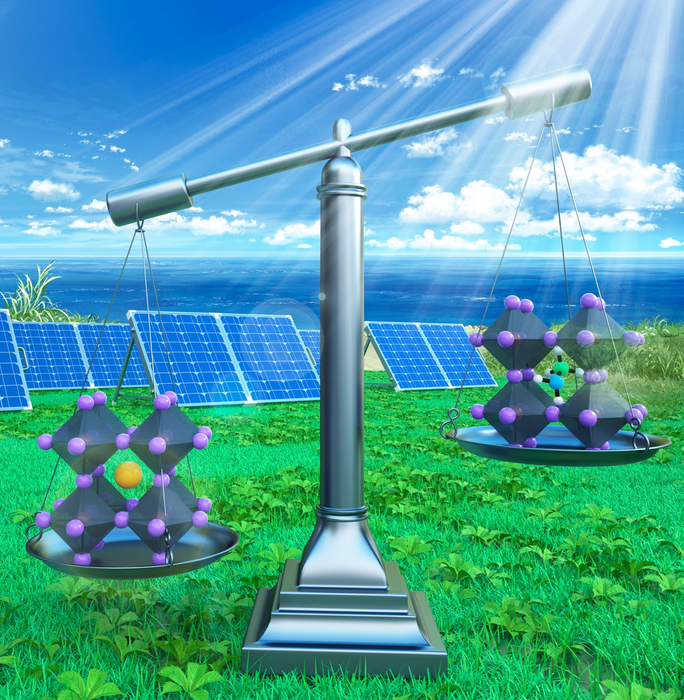Most of the impressive achievements seen so far with perovskite solar cells have been made by scientists working with organic-inorganic perovskite materials – most often combining iodine and lead with organic molecules containing hydrogen and carbon (most often methylammonium and formamidinum).
The organic elements are thought to be essential in limiting formation of defects in the material, and in allowing for the simple, low-temperature manufacturing processes that make perovskites so attractive to the PV industry. These molecules also, however, are at the root of many of the challenges keeping perovskites from large-scale use, and can break up entirely resulting in serious performance loss.
And just as environmental concerns have led scientists to trial replacing lead with other materials, investigating alternatives to the organic molecules could be one way to solve the problem. Cesium has proven to have strong potential as a replacement, although a large part of the research community continues to focus on organic-inorganic perovskite materials.
Efficiency potential
Scientists led by the University of California Santa Barbara developed a method to compare the potential of different perovskite compositions, and found that all-inorganic materials have the potential for better solar cell performance than those using the organic material.
“To compare the materials, we performed comprehensive simulations of the recombination mechanisms,” explained UC Santa Barbara scientist Xie Zhang. “When light shines on a solar-cell material, the photo-generated carriers generate a current; recombination at defects destroys some of those carriers and hence lowers the efficiency. Defects thus act as efficiency killers.”
The group’s calculations are described in full in the paper All inorganic halide perovskites as candidates for efficient solar cells, published in Cell Reports Physical Science. They compared a cesium-based perovskite with one containing methylammonium, and concluded that the presence of organic materials actually increases the chance of defects appearing in the material, and introduces challenges that disappear when it is replaced with cesium. “We believe that the prospects of using CsPbI3 for efficient solar cells may have been significantly underrated; its optoelectronic performance actually surpasses that of the hybrid perovskites from a nonradiative recombination point of view.”
Manufacturing
One of the reasons inorganic perovskites have so far taken a backseat is that actually fabricating them is more challenging. The UCSB scientists, however, note that other recent research suggests that this could be overcome, and with the knowledge that better efficiencies can be achieved this way, scientists could increase their efforts working on processes for all-inorganic perovskite fabrication.
“We hope our results will inspire further experimental work on developing effective strategies to stabilize CsPbI3 in the perovskite structure, thus enabling a new pathway to making highly efficient perovskite solar cells,” the group concludes.
This content is protected by copyright and may not be reused. If you want to cooperate with us and would like to reuse some of our content, please contact: editors@pv-magazine.com.




3 comments
By submitting this form you agree to pv magazine using your data for the purposes of publishing your comment.
Your personal data will only be disclosed or otherwise transmitted to third parties for the purposes of spam filtering or if this is necessary for technical maintenance of the website. Any other transfer to third parties will not take place unless this is justified on the basis of applicable data protection regulations or if pv magazine is legally obliged to do so.
You may revoke this consent at any time with effect for the future, in which case your personal data will be deleted immediately. Otherwise, your data will be deleted if pv magazine has processed your request or the purpose of data storage is fulfilled.
Further information on data privacy can be found in our Data Protection Policy.